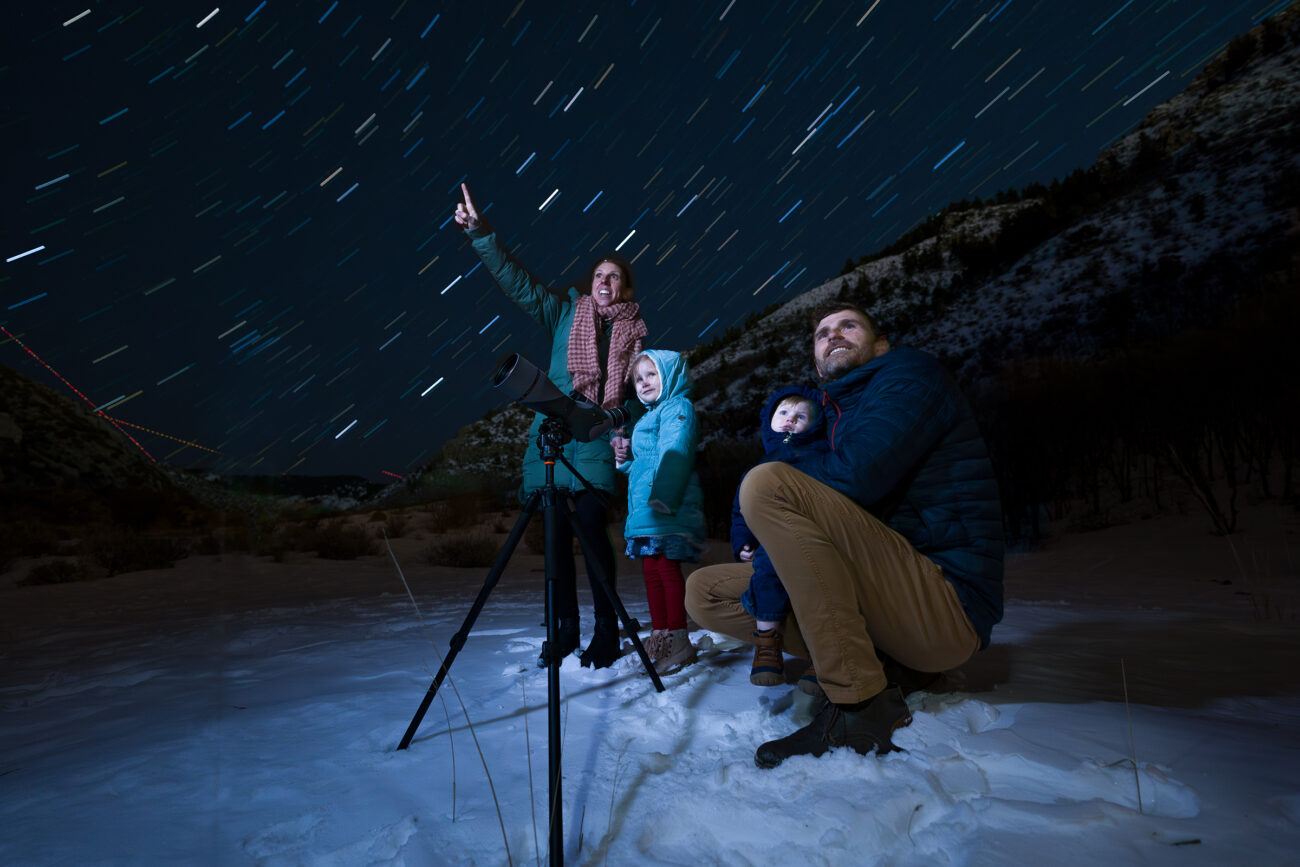Keeping Athletes on the Field: A Glimpse into the USU Training Team
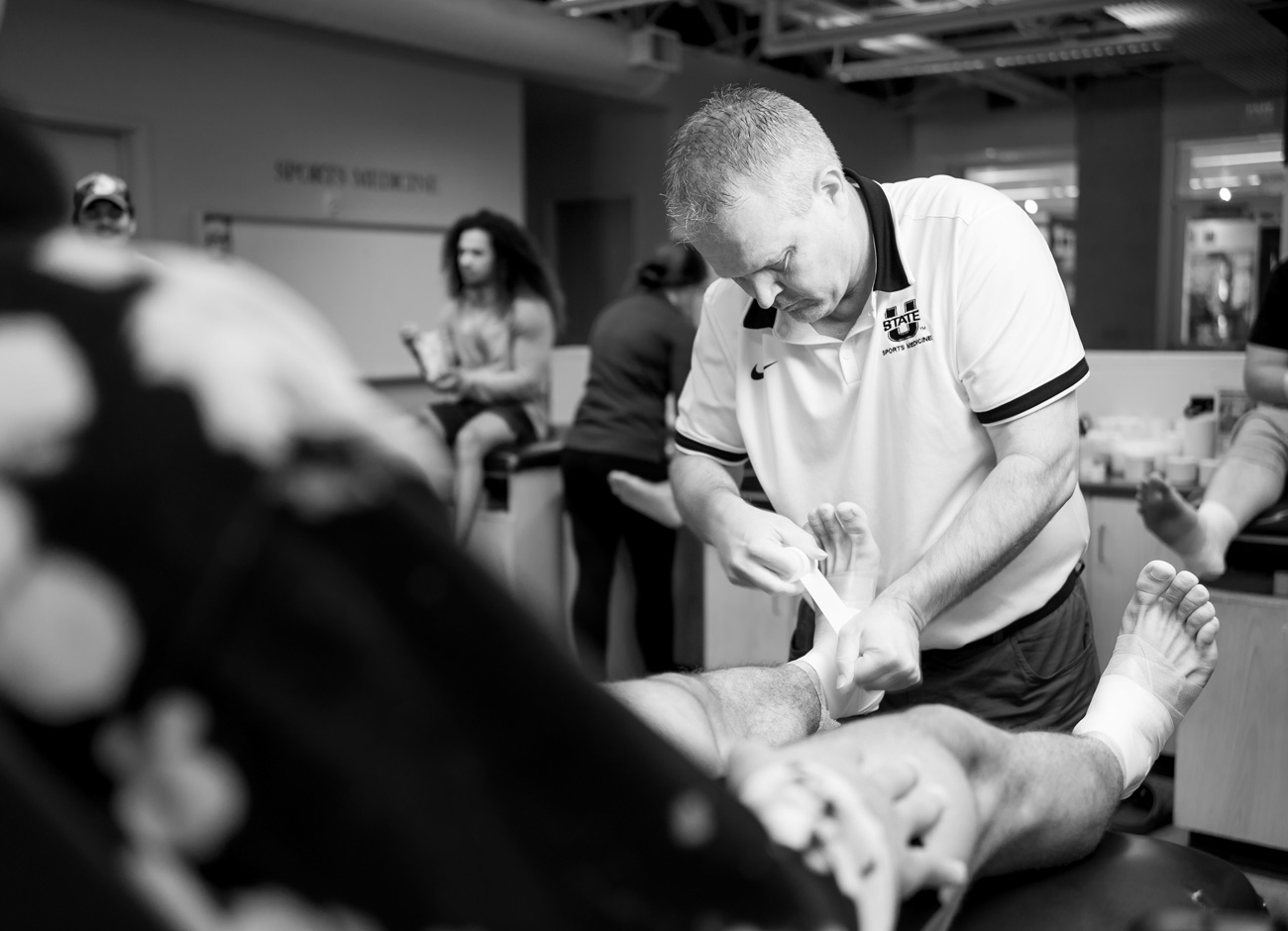
The desk in Mike Williams’ office in the Dale Mildenberger Sports Medicine Complex in the Jim & Carol Laub Athletics-Academics Complex is covered with wedding announcements from the numerous Aggie athletes that he’s worked with over the last 30 years.
“The best moments for me have always been the off-the-court moments while on the bus or before practices when you get to see the kids joking around and having fun,” says Williams, Utah State University’s head athletics trainer since 2013. “And I enjoy being able to kind of mentor kids, especially as I’ve gotten older. I have a different perspective on life now, and sometimes you can help them get through problems because you’ve seen it so many times.”
His career in sports medicine started one summer day in 1992 when Williams ‘96 asked Dale Mildenberger — USU’s head athletics director for 39 years: “So, what is an athletic trainer?”
After explaining his duties to the young USU student on “a fact-finding mission,” Mildenberger noted that one of his student trainers had been let go two days earlier and asked Williams if he wanted a job.
“I didn’t really know what it was,” Williams admits. “But I started at football camp in August and never looked back. I walked in on the first day, they showed me how to tape that afternoon, and about an hour later, football players walked in, and I had to start taping them. It was baptism by fire.”
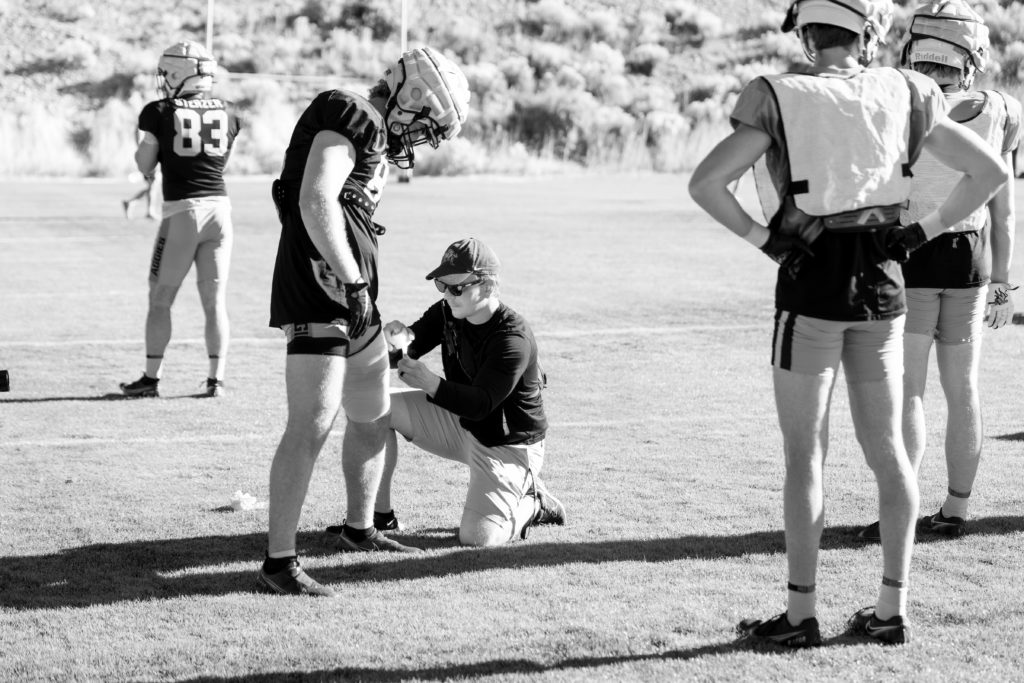
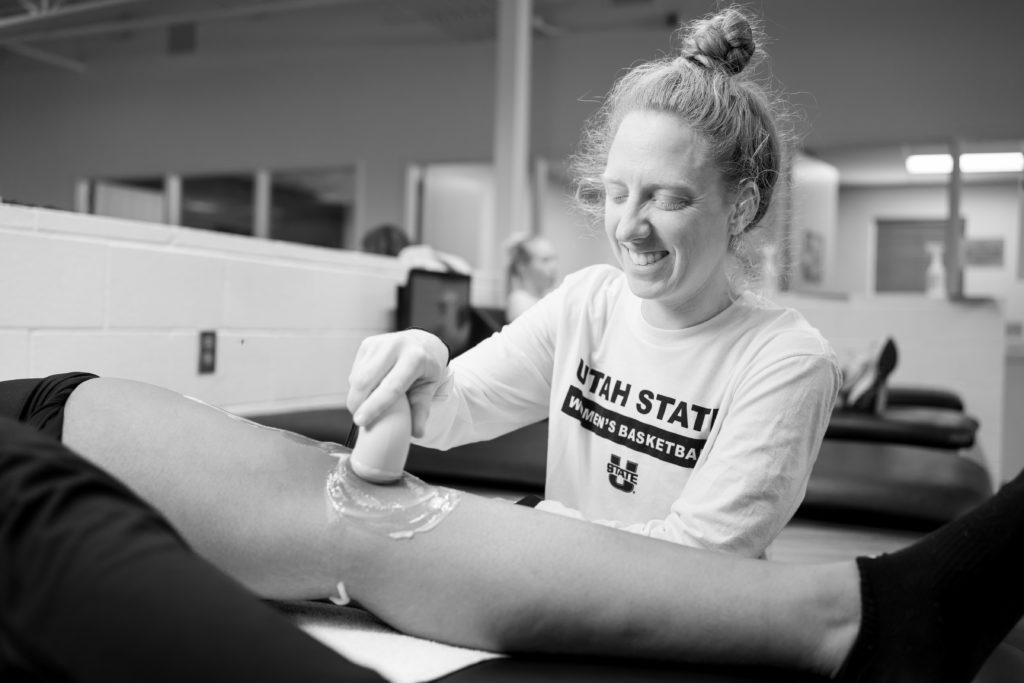
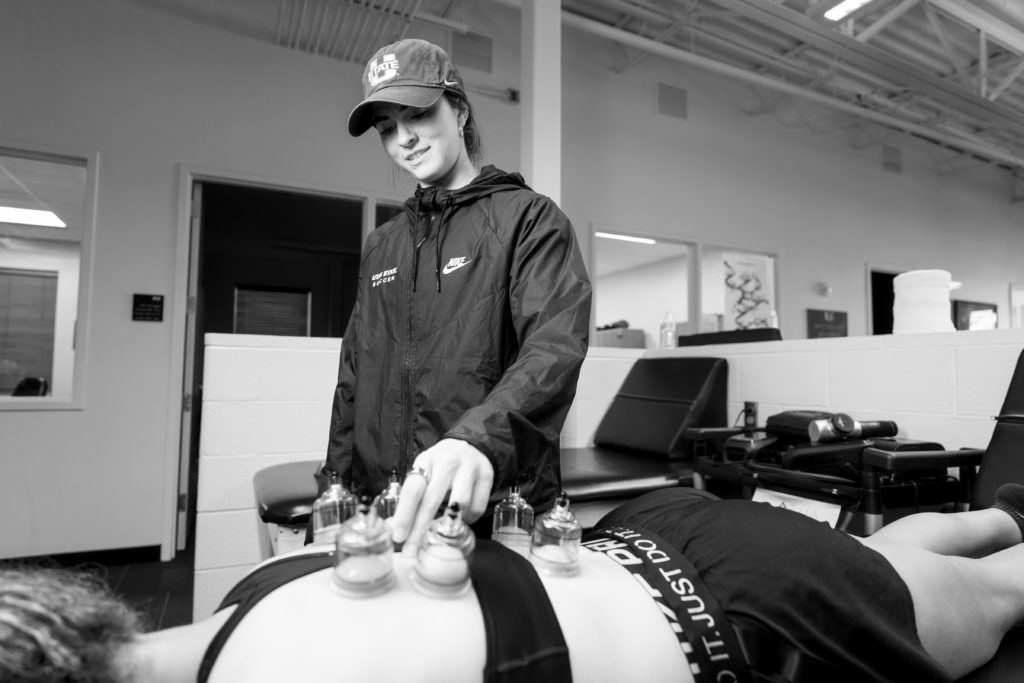
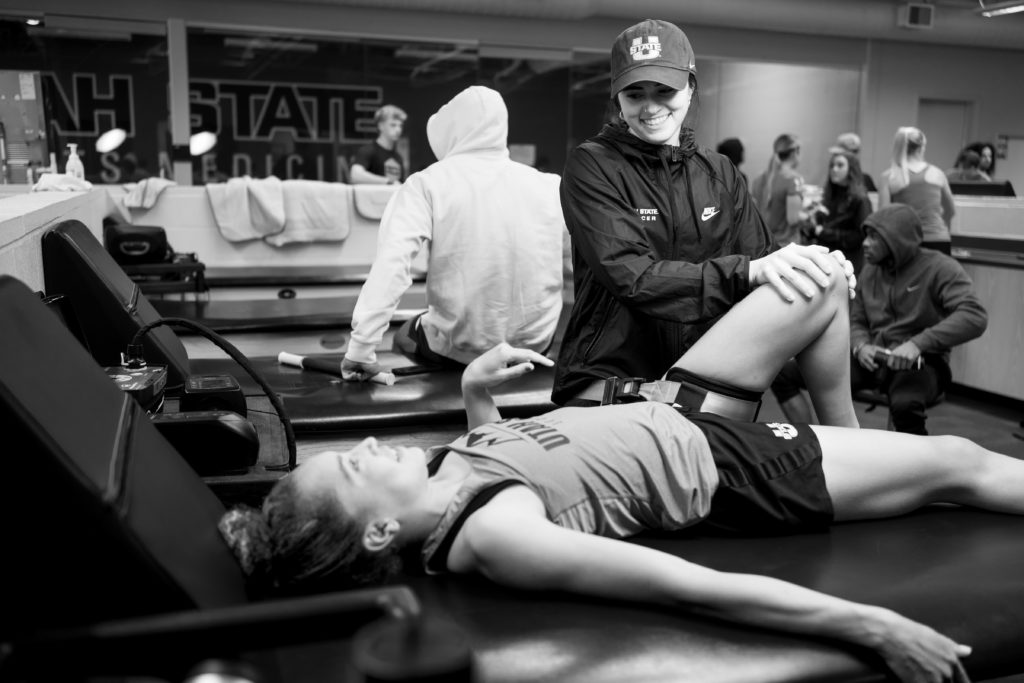
Times were different back then. Student trainers could work unsupervised with basically nothing more than first-aid training. Now they are required to be supervised and certified by a national organization.
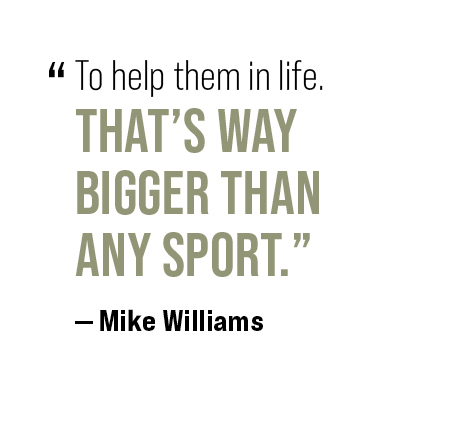
“I couldn’t do now what I did back then,” admits Williams.
After graduating with a bachelor’s in exercise science, Williams completed a master’s in sports administration at the University of Idaho and then worked as a trainer for the Idaho Stampede basketball team and at Logan Regional Hospital before returning to Utah State. He served as the trainer for men’s basketball team and gained notoriety throughout the state for saving the life of Danny Berger after the USU forward collapsed during practice on Dec. 4, 2012.
Williams’ quick use of CPR and an automated external defibrillator (AED) kept Berger alive until paramedics arrived at the Spectrum, and Berger not only survived but resumed his basketball career the following season.
“I get a lot of credit for that, but I was really only involved for like two minutes,” says Williams, who was honored with the Heartsaver Hero Award by the American Heart Association in 2013. “But it was a career-changing event for me, and a life-changing event for Danny. … I’m so glad it worked out for him.”
Completed in 2008, the 11,000-square-foot Mildenberger Complex accommodates USU’s sports medicine staff, which is currently comprised of eight full-time and five part-time athletic trainers who oversee about 375 student-athletes competing for 15 NCAA Division I programs.
Williams primarily handles the football team, where he carefully watches every play as the mandated “medical observer” in charge of watching for potential concussions, as well as dealing with other injuries.
“I’m always watching to see if everybody stands up and walks off,” Williams says. “If somebody’s laying on the ground, how are they laying and are they grabbing something? And you know your team. Some of them are a little dramatic, so is it a dramatic kid? Or is a kid that’s not?”
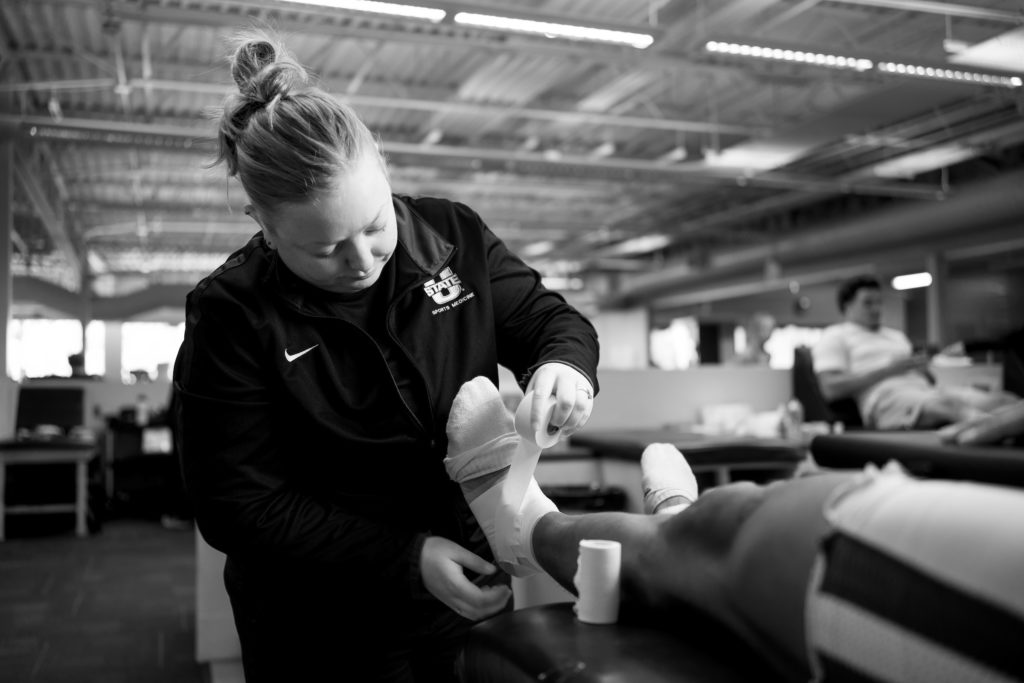
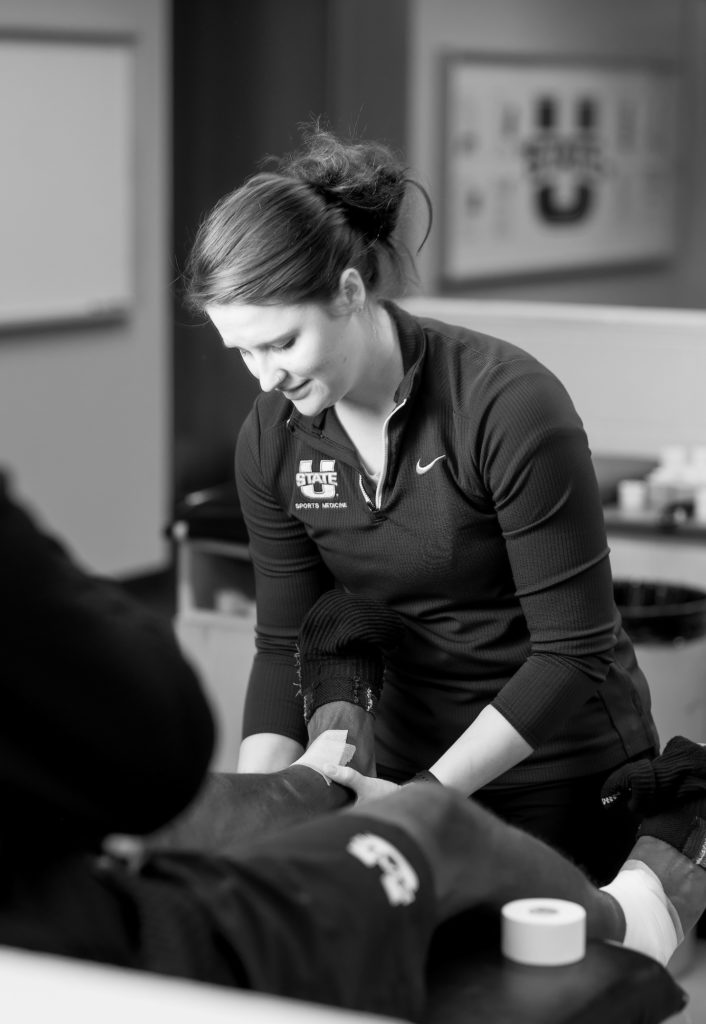
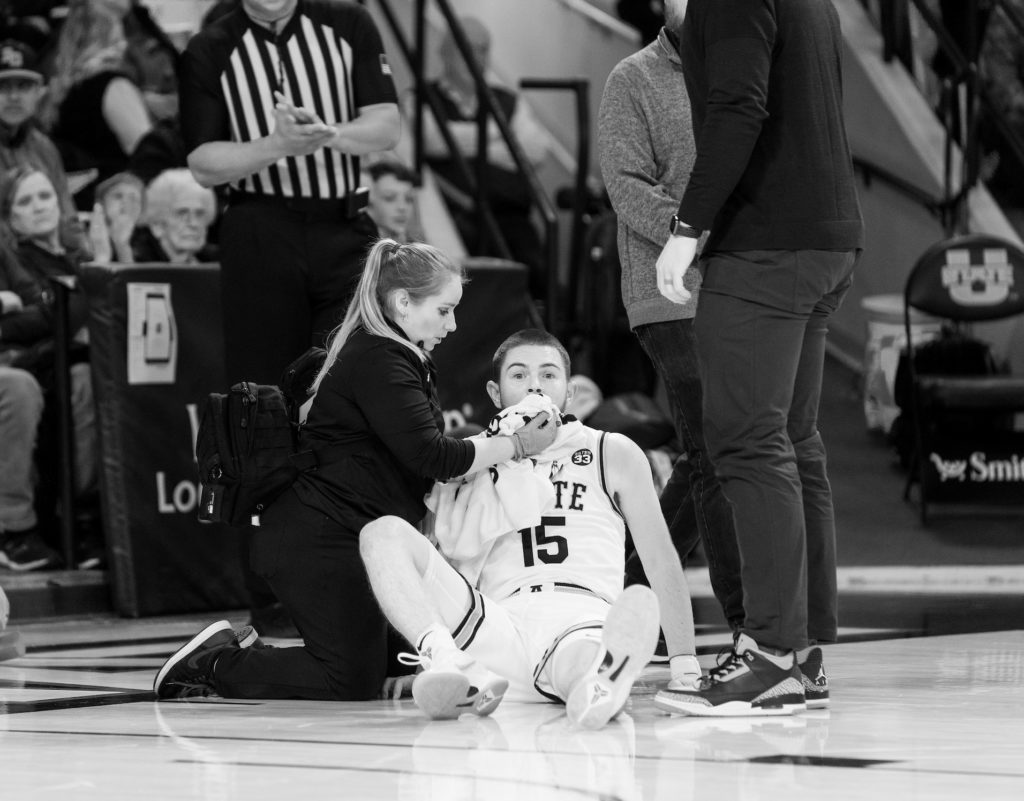
While facilities and staffing have improved since that first day he walked into Mildenberger’s office, “expectations have also changed,” Williams says.
“Resources have skyrocketed, but expectations have also skyrocketed,” he says. “The demands on student-athletes have gone up due to the year-round nature of athletics now, which means trainers are expected to be at more things.”
Now someone who hires trainers himself, Williams says he looks for individuals who “have some energy and who want to buy into what we’re trying to accomplish.”
“Being older, I realize it’s just a game in the whole scheme of life. But to those athletes, that is the biggest thing in their life right now,” Williams explains. “I want people who understand that and have personalities that allow them to communicate and work with the coaches and the student-athletes. To help them in life – that’s way bigger than any sport — and what they are going to accomplish after college.”
By Jeff Hunter ’96
Photos by Levi Sim






